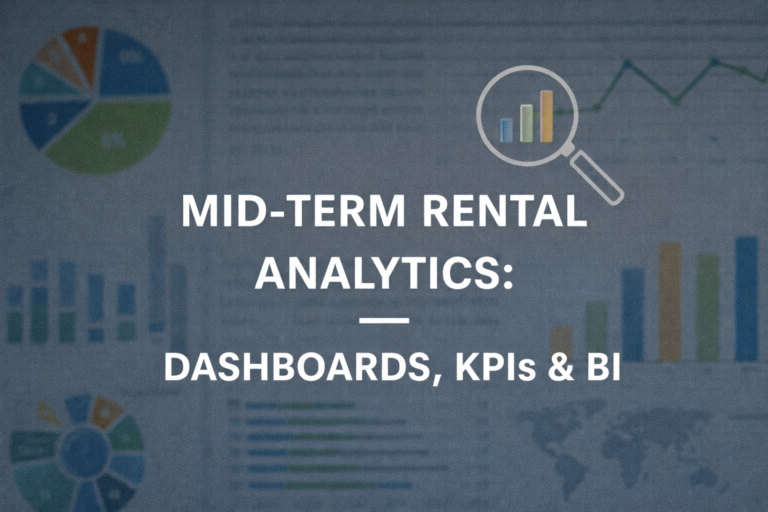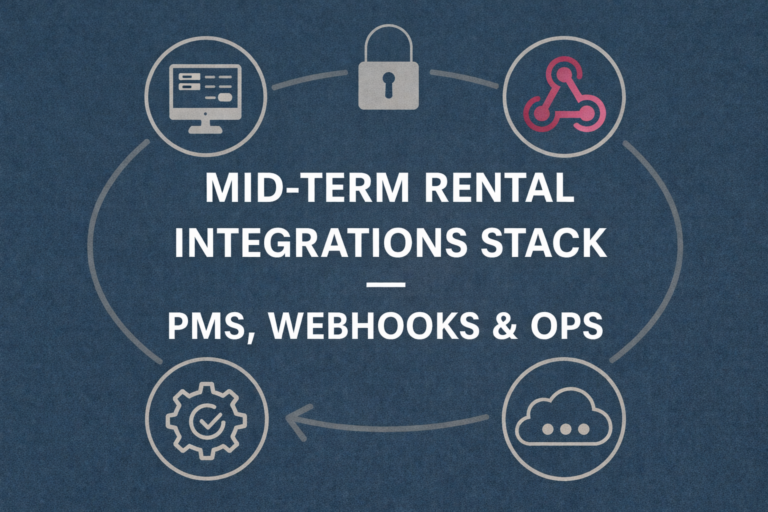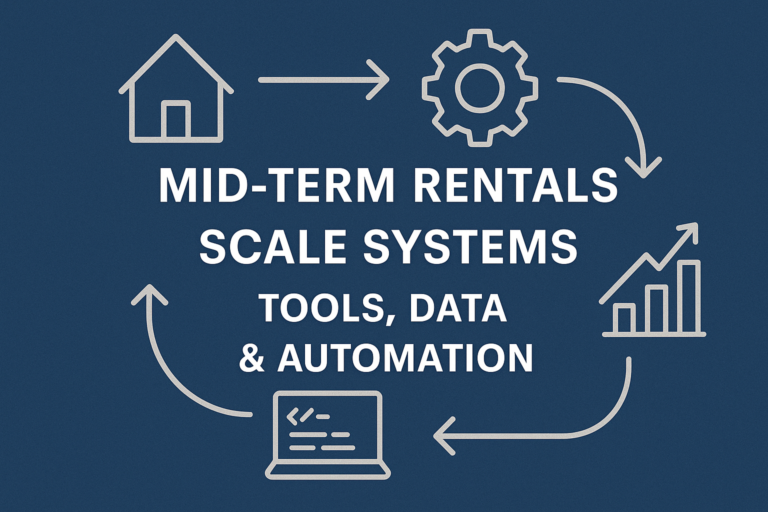Introduction: Why Mid-Term Rental Pricing Matters
Pricing can make or break your success in the mid-term rental market. In seasonal regions, your income potential swings with the seasons. That’s why mastering mid-term rental pricing strategies is essential to keeping your properties booked and your revenue predictable.
Understand Seasonal Demand Shifts
Before setting your rates, study your local market’s peak and off-peak seasons. Cities with tourism booms, university calendars, or corporate rotations experience predictable demand changes. Use local event calendars, booking trends, and competitor pricing to map out your high and low seasons.
Base Pricing vs. Seasonal Adjustments
Set a base rate for your property that reflects your costs and minimum profit margin. From there, layer in seasonal adjustments:
- Increase rates by 15–25% during high-demand months (e.g., summer, holidays).
- Offer 10–20% discounts for low-demand periods to avoid vacancies.
- Use a 30–90-day minimum stay rule to attract mid-term guests while reducing turnover costs.
Offer Value, Not Just Lower Prices
Instead of dropping rates too low in the off-season, add perks:
- Free cleaning service every two weeks
- Flexible move-in dates
- Utility caps or included Wi-Fi
- Parking or pet-friendly bonuses
This keeps your pricing competitive without undercutting your brand.
Use Dynamic Pricing Tools Cautiously
Dynamic pricing software like PriceLabs or Beyond can be useful—but they’re usually geared toward short-term stays. For mid-term rentals, combine automated data with manual adjustments to reflect longer stays and fewer turnovers.
Attract Seasonal Tenant Segments
Adapt your pricing based on who’s traveling:
- Summer months: Traveling nurses, remote workers, relocations
- Winter months: Snowbirds, extended family visits
- Spring/Fall: Business relocations, academic stays
Adjust pricing and marketing messaging to align with their needs.
Monitor, Evaluate, and Adjust
Review performance every quarter. If you’re getting consistent 100% occupancy, your prices might be too low. If your property sits vacant too long, it might be too high for the season. Adjust gradually and document what works year to year.
Final Thoughts: Stay Flexible and Data-Driven
Seasonal markets require flexibility. The more you know your audience and respond to shifting demand, the more predictable your income will be. Smart mid-term rental pricing isn’t about charging more—it’s about charging smarter.
📌 Want help optimizing your pricing or filling vacancies?
Visit info.ministays.com to explore our pricing tools, expert guides, and property support services.
Need a full-service solution? Check out ministays.com and connect with our team today.



